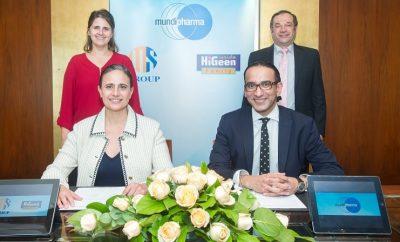
(Being extracts of a paper delivered at the scientific symposium of the International Pharmaceutical Students Federation (IPSF) conference held in Harare, Zimbabwe in July, 2016)
I have chosen as a topic for my paper today, ‘Pharmacy In 2050; Forces That Will Shape Practice’. The relevance of this for students who will be in mid-career in thirty years’ time is self-evident. For those of you who will find it difficult to relate with this, I will want to share a little bit of my personal story.
It will be 30 years in December 2016 since I left pharmacy school. It wasn’t until 12 years later in 1998 that I got my first e-mail address. Mobile phone was not in existence. There was no Google, no social media, and for emphasis, Facebook, Twitter and Whatsapp were not in existence. The human genome had not been fully sequenced. Only one person had been diagnosed with HIV/AIDS in my home country Nigeria. Reverse Transcriptase Inhibitors (RTIs) and Protease Inhibitors (PIs) that are at the cornerstone of HIV treatment today had not been discovered then. Artemisinine was not yet in commercial use and Chloroquine was still central to malaria treatment.
In drug research and development, a more efficient form of serendipity still held sway, backed by high throughput screening and assay technology. But at the turn of the century, it is estimated that 40 per cent of all drug research effort was devoted to biotechnology. In 1986, all the ten top leading pharmaceutical products in the commercial space were small drug molecules; today, at least half of them are products of biotechnology.
We have seen massive changes over the past thirty years, and I dare say I probably will practise for another twenty-five years, and I think the changes will be bigger still. Pharmacy practice is still done at the neighborhood community pharmacy, the hospital and the drug production floor. The basic aim still remains to provide access, safely, to effective medicines. This life forces that are tangential to the core curriculum of Pharmacy, as it is taught in pharmacy schools today, will compel a different approach and mindset in the way we deliver services. Some of these life forces are beginning to manifest and influence practice; some are still in the future.
Broadly, the following forces will influence practice in the future:
- Biotechnology
- Information and Communication Technology
- Logistics
- Demography
- Politics
- Climate Change
- Travel.
Biotechnology has always had an influence on drug production and therapeutics. Production of vaccines and serums and their use in the management of diseases predated the full understanding of the structure of DNA. However, application of powerful computational tools in molecular biology led to the full sequencing of the human genome at the turn of the century. These tools not only made the job of developing biotechnology products faster, they also made these tasks cheaper, such that diseases that were proving difficult to manage (like cancer, auto immune diseases and viral infections) could be investigated at the molecular level, revealing opportunities for a new approach to diagnosis and therapy.
In industry, this has led to the emergence of specialist biotechnology firms that are beginning to prove dominant by innovating new products to tackle previously difficult ailments, and new diagnostic tools that make therapy more targeted and efficient. Industry will continue to evolve in this direction. In hospital and at the community pharmacy, we will in future see pharmacists being tasked to advise on efficiency and suitability of therapy.
Tools will be available to cost-efficiently profile patients genetically and advise on the most ideal therapeutic choices. Personalised medicine will no longer be a cliché, and pharmacists will be at the centre of it. Now, for $99, there are genetic testing kits available to test your saliva for markers that will reveal increased risks of different diseases including cancer, Alzheimer’s, diabetes and addiction.
Sometimes, the choices may not be easy. Angelina Jolie is a good example. She submitted to double mastectomy after such a test revealed that she had a 97 per cent risk of having breast cancer.
Information and communication technology is still evolving, and the extent of its influence on every facet of our lives is still at the level of conjecture. In the next 24 hours, 600 million tweets would have been sent and there would have been 1 billion Google searches. WhatsApp would have processed 42 billion messages, 1.6 billion photos and 250 million videos. Add to these, data generated by over 1.2 billion Facebook users and 4.7 billion mobile phones, tens of millions of wearable devices and medical and prescription data being uploaded into the cloud from different hospitals and community pharmacies.
Cloud computing is providing infrastructure to store all these data, and Big Data is developing the ability to analyse them. These will provide capacity to predict epidemics, evaluate safety and efficacy of medicines on a global population. All these have implications for pharmacovigilance, clinical trials and inventory management. Google made attempt in the past to predict epidemic of Flu and Dengue Fever through analysis of search patterns. It wasn’t very successful, and the exercise has been suspended, possibly to fine-tune the algorithm.
On the dark side, among other things, social media is threatening the ability to conduct double-blind clinical trials, with clinical trial patients sharing their trial experiences while the trial is on-going.
Artificial Intelligence, otherwise called AI, is devoted to designing machines and software that learn and solve problems. Its application is seen in machines playing games like Chess and Go; advanced machines like self-driving cars and robotic waiters in restaurants; and applications like Siri, Google Maps, Google searches.
It is only a matter of time before such machines are introduced to hospitals and community pharmacies. I suspect that in the future, they will take over mundane tasks like counting tablets, pouring syrups and giving standard instructions on dosage, side-effects, contra-indications and do drug therapy monitoring. The pharmacists will be free to do higher order things.
A business publication, Strategy + Business, last year reported that the FDA approved the first 3D-printed drug for consumer use. I cannot claim to know much about this, but I envisage the community and hospital pharmacy of the future, will have among its staple of equipment, a 3D printer and cartridges containing different chemicals with which they will produce drugs a la carte.
Elon Musk is perfecting the idea of making space travel routine and cheaper. Amazon is working on deliveries with drones. Pharmacists must start thinking about stability of formulations in the weightless environment of space and exploit drones in drug deliveries to difficult-to-reach areas in times of wars, epidemics and natural disasters.
All these present tremendous opportunities and challenges. Rwanda, A country next door is already studying the possibilities this presents.
Already, advances in logistics are being exploited to drive efficiency in pharmacy practice. In the United States, chain pharmacies are already investing in centralised prescription processing to refill prescription for chronic diseases. It reduces the requirements for pharmacists, drives cost down and frees time for more cerebral tasks by pharmacists. This is a model that will become popular in the future.
Absolute number, urbanisation and age distribution of population are demographic changes that may influence practice by 2050. World population has been increasing, and will continue to increase, albeit at a reduced rate. In 1990, there were 564 cities with population above 500,000. In 2030, that number is estimated to jump to 1,393.
This will be accompanied by transportation changes, with people walking shorter distances; increased household income and culture change, reflected in eating of more processed foods and sedentary lifestyles. These will lead to increase in diseases associated with tobacco addiction, high blood cholesterol, hypertension and diabetes – all chronic diseases that will draw on the resources of the neighbourhood pharmacy for management and therapy monitoring.
People are also living longer. In 1950, only 8 per cent of the world population was 60 or older. By 2050, it is estimated that, that proportion will be 22 per cent. The implications of this for the prevalence of certain diseases are obvious. High blood pressure, incontinence, cancer, diabetes, Alzheimer’s and dementia will be more common. Pharmaceutical services in old people’s homes and hospices will be in greater demand.
In Japan, the country with the largest proportion of the aged in the population, diapers for adult are expected to start outselling children-sized diapers very soon.
About twenty years ago, the major criticism of the pharmaceutical Industry was the focus on a few disease areas that were commercially viable. Every company was interested in dyspepsia, depression, smoking cessation, erectile dysfunction, dyslipidemia and other disease areas that required chronic treatment and affect a large number of people. This is where they had the greatest prospect for discovering the next ‘block buster’.
However, advances in biotechnology and application of information technology in research has thrown more light into the genetic basis of diseases and opened up opportunities for finding treatments for rare diseases affecting few people.
The commercial prospect of these new drugs don’t fit existing models. A lot of cancers, autoimmune and genetic diseases now have cure, but the model for commercialising them compels very high market prices. A few examples. Glybera, a drug for gene therapy of Familial Lipoprotein Lipase Deficiency costs $1.2m for a course of treatment for a year. Cinryze for hereditary angioedema costs $350,000 per year; and a new treatment for Hepatitis C, Solvadi, costs $1,000 per pill.
All these, of course, put pressure on health systems, and politicians can’t face the electorates if they allow the death of a person because of high cost of drugs. The only option left for them is to put pressure on the pharmaceutical companies to do something about the cost of drugs. They are beginning to do that. President Hollande of France demanded that Cost of medicines be put on the agenda of G7 summit held in Japan in May 2016. President Obama, in his health care reform program, called Obamacare, is demanding that ‘The Health and Human Services Secretary should be empowered to directly negotiate prices with manufacturers of high cost drugs covered under part D of the Medicare’s prescription-drug programme’.
The Los Angeles Times reported that ‘drug makers’ would only be able to access Medicare’s 52 million beneficiaries if they agree to haggle and to supply HHS with all cost and clinical data, as well as other information necessary to come to an agreement on price’.
By 2050, this will probably be the model that will prevail and the famed profitability of the industry will have an additional hurdle to scale for its sustenance.
Travel/Epidemics
Medicine has tamed the most virulent epidemics. Cholera breakouts are contained with vaccinations, smallpox is all but eliminated. Epidemics like Ebola are self-limiting because of their virulence, and when they break out in small communities, they are contained by communal effort of isolating the victims and safely disposing their dead bodies. That seems to be in the past. Travel that has become cheap and far-reaching has made it easy for infected people to travel far before the first signs of their diseases become obvious.
Nothing illustrates this better than the pattern of spread of the Zika virus. It was said to have been discovered in Africa in 1947. It was not noticed in Pakistan, Malaysia and Indonesia until thirty years later in 1977. It took another thirty years to travel a couple of thousand kilometers to reach the Pacific Islands of Micronesia. Aided by cheap travel, it arrived Brazil only eight years later in 2015. Between 2015 and now, it has covered almost all of South America, crossed into North America and the first child born with Microcephaly in Europe was reported in Spain over the last weekend. We saw the same rapid spread with Asian Influenza and Ebola.
Distance, it is now obvious, cannot shield anyone from any epidemic breaking out in the remotest part of the world. The way we manage new product development and regulate market entry in different markets will need to change if we must assure access to medicines and critical vaccines to contain epidemics globally. The current model cannot cope with present-day realities. Travel has become cheaper and easier, and humans as vectors of disease are always on the march. Pharmacy will need to change to protect and serve them.
By 2050, the patient will arrive the neighbourhood community pharmacy, well informed – having consulted resources on the Internet about his disease, treatment choices and legal rights. The pharmacist, with predictive tools, aided by cloud computing and Big data, would be expecting him. With knowledge of prevalent diseases in the neighbourhood and the questions that are trending on social media, he/she is stocked with the drugs that are suited for his treatment. On reading the prescription, the pharmacist will dispense those in stock. The only one that is not available is printed out of a 3D printer, after loading it with cartridges containing the relevant raw materials.
Genomics would have advanced to a level that the pharmacist can collect the saliva of the patient and use a machine to read out the patients’ genetic profile, pointing out markers that reveal predisposition to certain diseases and discussing options with the patient. Most patients will be old, and well-controlled with their chronic ailments because of the involvement of the pharmacist who monitors therapy with a myriad of tools at his disposal.
The industrial pharmacist will be devoted more to safety in drug use, either on earth or in space. Regulation, pharmacovigilance and quality assurance will occupy a lot of his time because quite a number of products will be big molecules and complex.
In all, Pharmacy in 2050 will be fun, exciting and certainly fulfilling.
By Pharm. Sola Solarin
Sola Solarin is the vice president of the Industrial Pharmacists Section (IPS) of the International Pharmaceutical Federation (FIP). He works as the Managing Partner of Savante Consulting Ltd, a compliance Business in Pharmaceutical, Quality and Environmental Regulation.
































